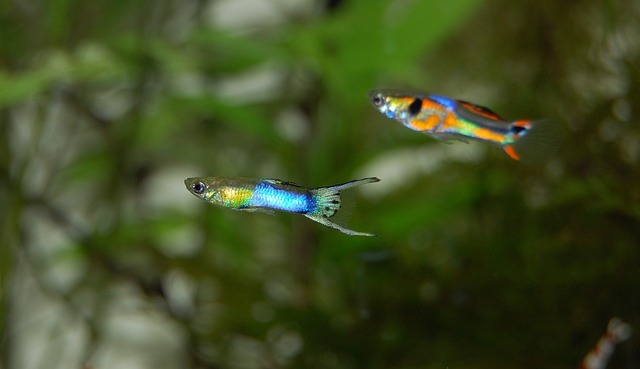Guppies are among the most popular freshwater aquarium fish due to their vibrant colors and easy care requirements. However, one of the questions that often arises among guppy enthusiasts is whether these fish are surface swimmers.
The answer is yes; guppies are surface swimmers who spend significant time near the water’s surface.
Guppies are found in slow-moving streams, ponds, and shallow waters in the wild.
They have adapted to living in these environments by developing a torpedo-shaped body that allows them to move quickly through the water and a unique set of fins that helps them navigate and maintain their position in the water column.
Guppies are also known for jumping out of the water, which is a behavior they use to escape predators or catch insects flying above the water’s surface.
Surface Swimming in Guppies
Why Do Guppies Surface Swim?
Guppies are known for their surface swimming behavior. They are active swimmers and can be seen darting around the water’s surface. There are several reasons why guppies surface swim.
One reason is to breathe air. Guppies can breathe both through their gills and through a unique organ called the labyrinth organ, which allows them to extract oxygen from the air.
Another reason why guppies surface swim is to feed on insects and other small organisms that float on the surface of the water.
Surface Swimming vs. Bottom Dwelling
While guppies are known for their surface swimming behavior, they can also dwell on the aquarium’s bottom. However, guppies prefer to swim near the water’s surface because it allows them to access air and food easily.
Bottom-dwelling is a less common behavior in guppies and is usually associated with resting or hiding.
Benefits and Risks of Surface Swimming
Surface swimming behavior in guppies has several benefits. It allows them to access air and food more efficiently and provides a better view of their surroundings.
However, there are also risks associated with surface swimming. For example, guppies that spend too much time at the water’s surface are more vulnerable to predators, such as birds and other fish.
Additionally, guppies kept in tanks with poor water quality may surface swim more frequently due to oxygen deprivation.
In conclusion, guppies are surface swimmers that exhibit this behavior for several reasons, including breathing air and feeding.
While surface swimming behavior has its benefits, it also comes with risks. Therefore, providing guppies with a healthy and safe environment is essential to minimize the risks associated with surface swimming.
Guppy Habitat
Natural Habitat
Guppies are native to Central and South America and inhabit slow-moving streams, ponds, and other freshwater bodies. Their natural habitat is characterized by dense vegetation, including floating plants, submerged plants, and leaf litter.
Guppies are surface swimmers, but they also spend time in their habitat’s mid-water and bottom regions.
Guppies are often found in large groups known as schools in the wild. These schools protect them from predators and help the fish find food. Guppies are omnivorous, feeding on various small aquatic invertebrates, algae, and plant matter.
Aquarium Habitat
Guppies are a popular aquarium fish and relatively easy to care for. When setting up an aquarium for guppies, it is important to replicate their natural habitat as closely as possible. This includes providing plenty of vegetation, both floating and submerged.
Guppies prefer a water temperature between 72 and 82 degrees Fahrenheit, with a pH between 7.0 and 8.0. They are also sensitive to ammonia and nitrite levels, so keeping the aquarium clean and well-maintained is essential.
In addition to vegetation, guppies appreciate hiding places, such as caves or driftwood. They also enjoy a gentle current provided by a small filter or air stone.
Guppies are adaptable fish that can thrive in various aquatic environments, but they do best in aquariums that closely resemble their natural habitat.
Guppy Behavior
Swimming Behavior
Guppies are known for their active swimming behavior. They are surface swimmers and can often be seen swimming near the top of the water.
They tend to swim in schools, which helps protect them from predators. Guppies are also known for their jumping ability. They can jump out of the water to catch insects flying above the surface.
Guppies are also known for their ability to adapt to different water conditions. They can survive in both freshwater and saltwater environments. They can also tolerate a wide range of temperatures, from 64 to 82 degrees Fahrenheit.
Feeding Behavior
Guppies are omnivores and will eat a wide variety of foods. In the wild, they feed on algae, insects, and other small organisms. In captivity, they can be fed various foods, including flakes, pellets, and live or frozen foods.
Feeding guppies a balanced diet is essential to ensure they receive all the necessary nutrients. Overfeeding can lead to health problems, such as obesity and constipation. Feeding guppies small amounts of food several times a day is recommended.
In conclusion, guppies are active surface swimmers that can adapt to different water conditions. They are omnivores and require a balanced diet to stay healthy.









